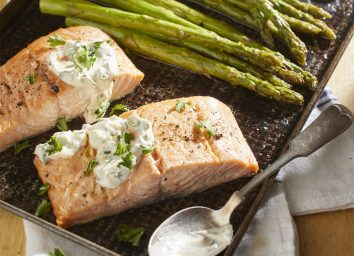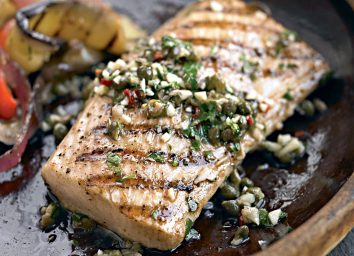5 Surprising Side Effects of Eating Shrimp, Says Dietitian
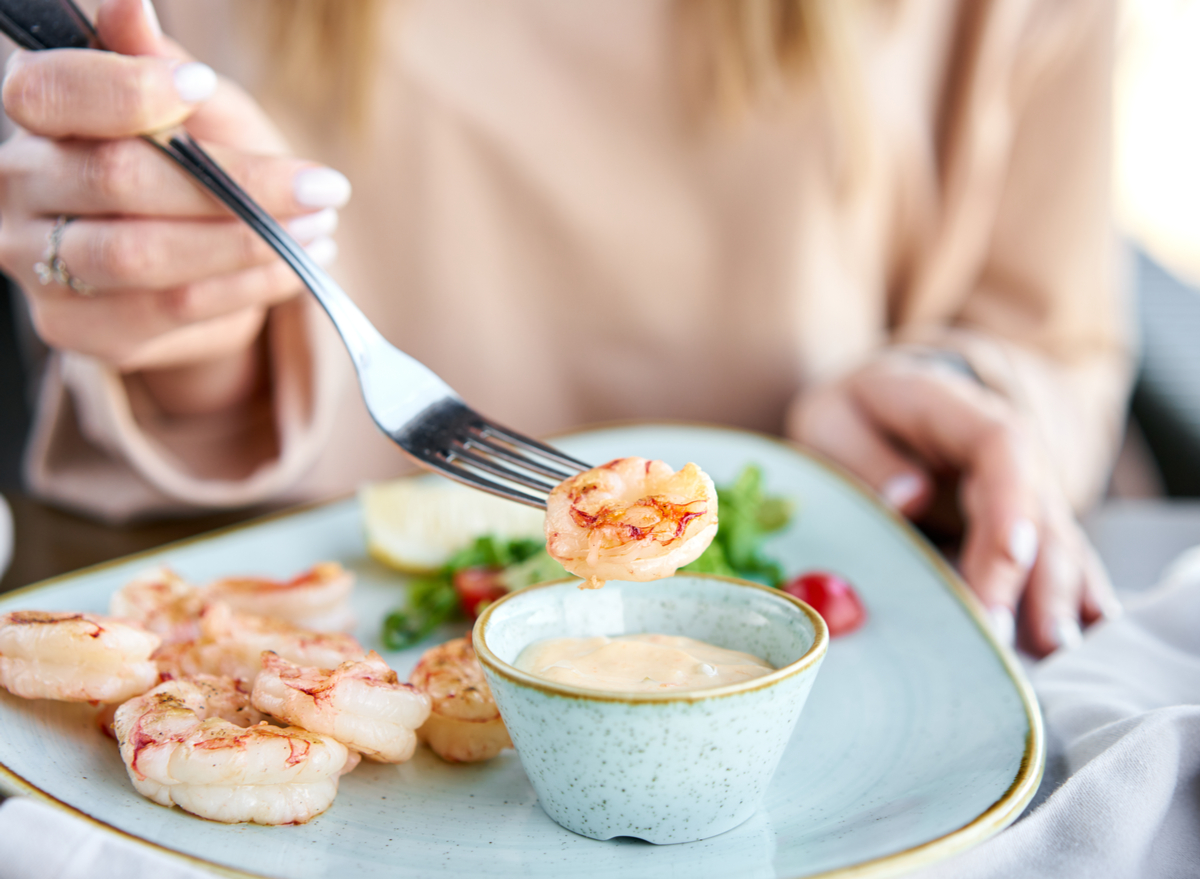
As you might visit coastal vacation destinations this summer and take advantage of local fare, one item on the menu could be local seafood like shrimp. Shrimp can be served up cold in its “cocktail” version alongside a tomato-based sauce, cooked and breaded on a seafood platter, as a Spanish-inspired shrimp paella, or in a jambalaya. Although taste might be king if we are traveling and taking in the tastes, sights, and sounds of new regions, being aware of what shrimp offers and doesn’t offer for our health should also be on the table. Read on for five surprising things that may happen to your body when you eat shrimp, and for more, don’t miss Surprising Side Effects Alcohol Has on Your Gut.
You will increase protein consumption.
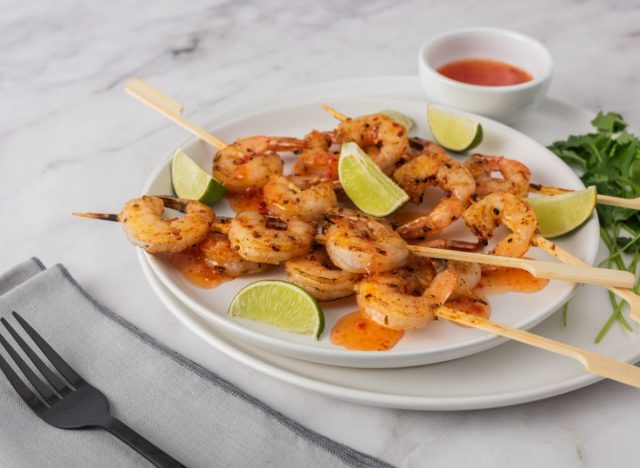
Shrimp delivers a mighty dose of protein at around 19 grams of protein per three-ounce serving. This equates to about 75% of total calories as protein, which fits in well with a diet seeking more lean protein sources. Protein is largely known for its contributions to preserving lean muscle, but protein also plays a critical role in the growth and repair of body cells and tissues, regulation of enzymes and hormones, and maintaining proper fluid balance.
You could improve your copper intake.
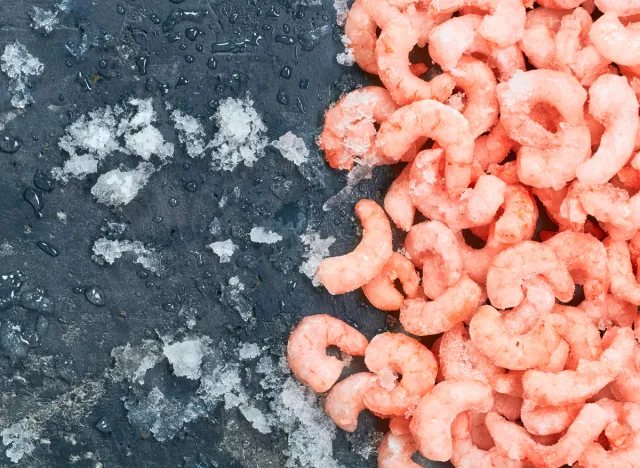
An essential mineral we usually don’t talk a lot about but is crucial in our diets is copper. Copper is involved in iron metabolism and the formation of connective tissue and neurotransmitters. Adult males and adult non-pregnant/lactating females should aim for 900 micrograms per day of copper. Shrimp contains around 300 micrograms per three-ounce serving.
Get an even bigger hit of copper by enjoying shrimp in a shrimp boil with potatoes (potatoes contain about 675 micrograms of copper per one medium potato) or shrimp in a pasta dish with a cashew-based sauce (cashews contain about 630 micrograms per one-ounce serving).
You may go overboard on dietary cholesterol.
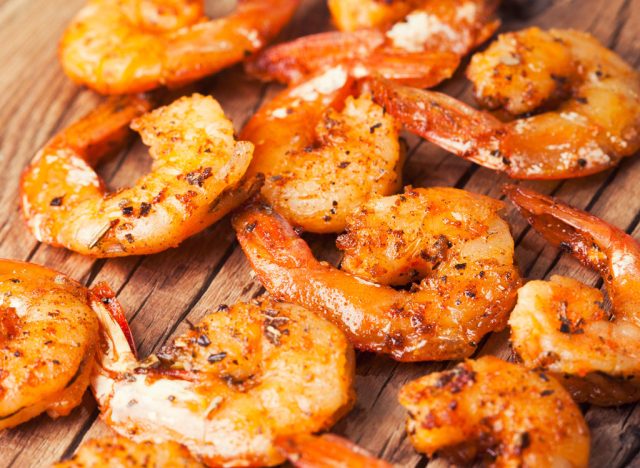
Although we know that saturated and trans fat make a more disappointing impact on our blood cholesterol levels than dietary cholesterol, excess (excess being emphasized here) intake of cholesterol likely contributes to heart disease and stroke risk. There is no longer an established recommendation for dietary cholesterol, but most nutrition professionals suggest keeping intakes below 300 milligrams a day. A three-ounce serving of plain shrimp comes in around 140 milligrams of cholesterol (and zero grams of saturated fat). If enjoying shrimp, at least keep the saturated fat to a minimum by avoiding buttery sauces, coconut (shreds or milk), and fried breading.
You could have too much sodium.
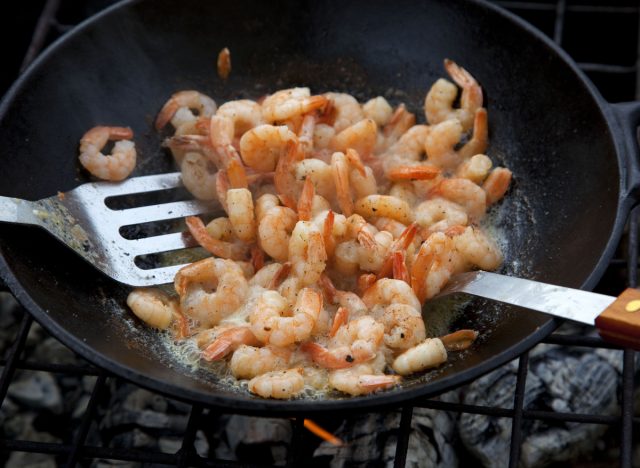
Most commercially available seafood, like shrimp, is treated with sodium-heavy ingredients to act as a preservative. This even includes “plain” shrimp that isn’t breaded or seasoned. Salt solutions act to preserve the integrity and quality of the item, but this compromises its nutritional profile.
Every product is created differently, so be sure to turn over the package to review the nutrition facts panel or inquire at your grocery store’s seafood counter about sodium content. Bonus points if you can find a shrimp product at or below 140 milligrams of sodium per serving (this qualifies it as low sodium).
You may fall shorter on omega-3 fats than you think.
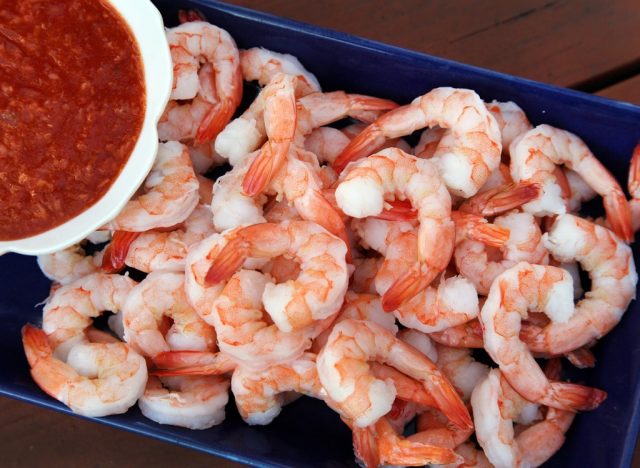
Seafood is often regarded as the gold standard way to consume omega-3 polyunsaturated fatty acids (although walnuts, chia seeds, and flaxseeds are in the lineup too!), but unfortunately, shrimp doesn’t make the cut.
The highest omega-3 fat content is seen in fish like herring, sardines, and Atlantic salmon, which provide between 1.19 and 1.83 grams of total omega-3s per three-ounce serving cooked. Shrimp, on the other hand, offers only around 0.24 grams of total omega-3s per three-ounce serving cooked. The adequate intake (AI) recommendation for ALA (alpha-linolenic acid) omega-3 fats is 1.6 grams per day for adult men and 1.1 grams a day for adult women who are not pregnant or nursing.
The point we’re making here isn’t to eat less shrimp, but to be aware that if you’re eating seafood for its omega-3 benefits, you should still be leaning on fatty fish more than shrimp.

